Have you been wondering if you can turn those concentrates into edibles? Discover everything you need to know about making edibles with cannabis concentrates like shatter, wax, crumble, distillate, FECO, and more, including important notes about safe extraction methods, decarb time and temperatures, and how to incorporate these concentrates into your favorite recipes.
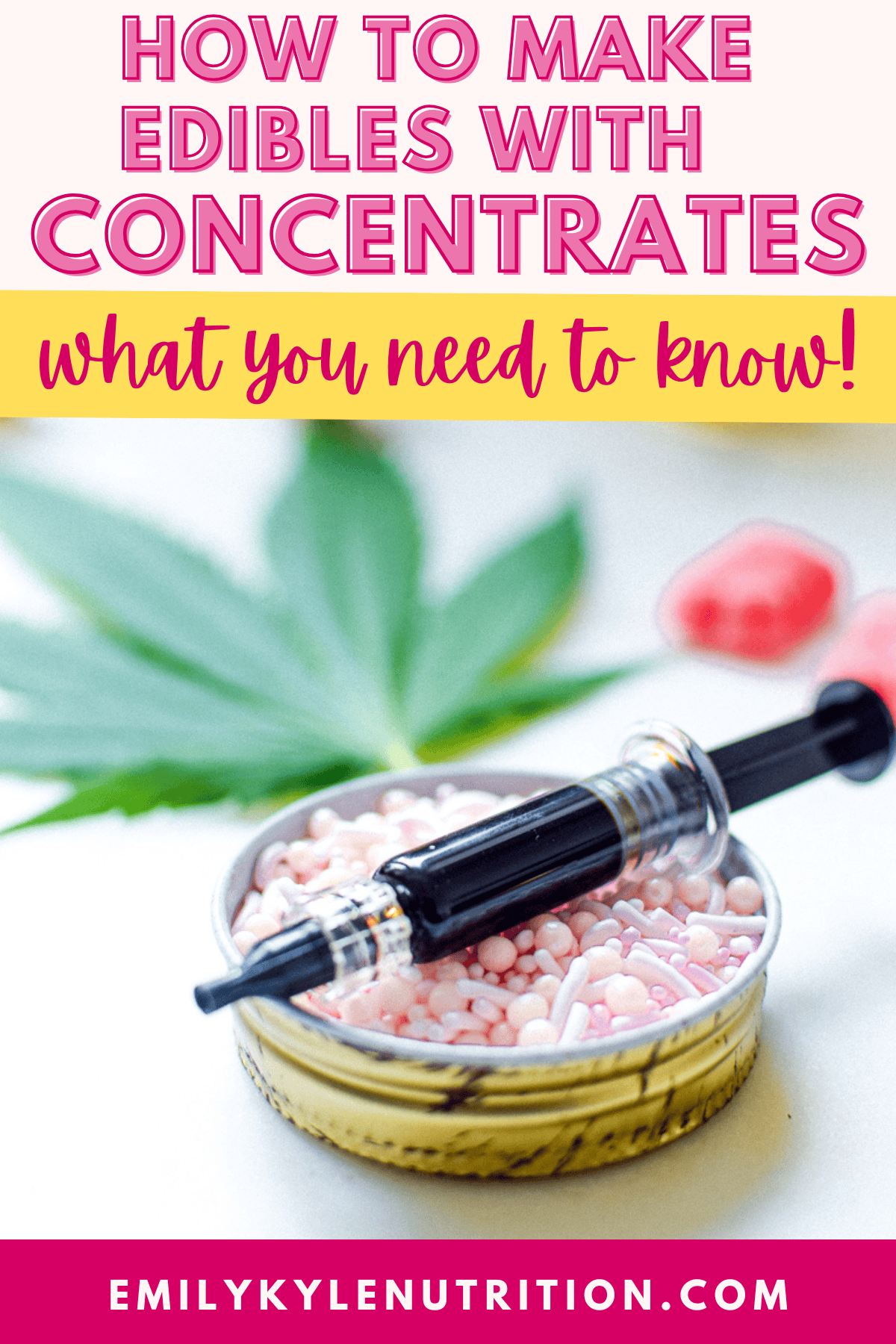
Table of Contents
Article Features
- What concentrates are and how to use them
- A helpful chart to know which ones to decarb
- Want to skip the hard work? Shop with me and have premium, high-quality cannabis products delivered directly to your door! Now shipping across the US.
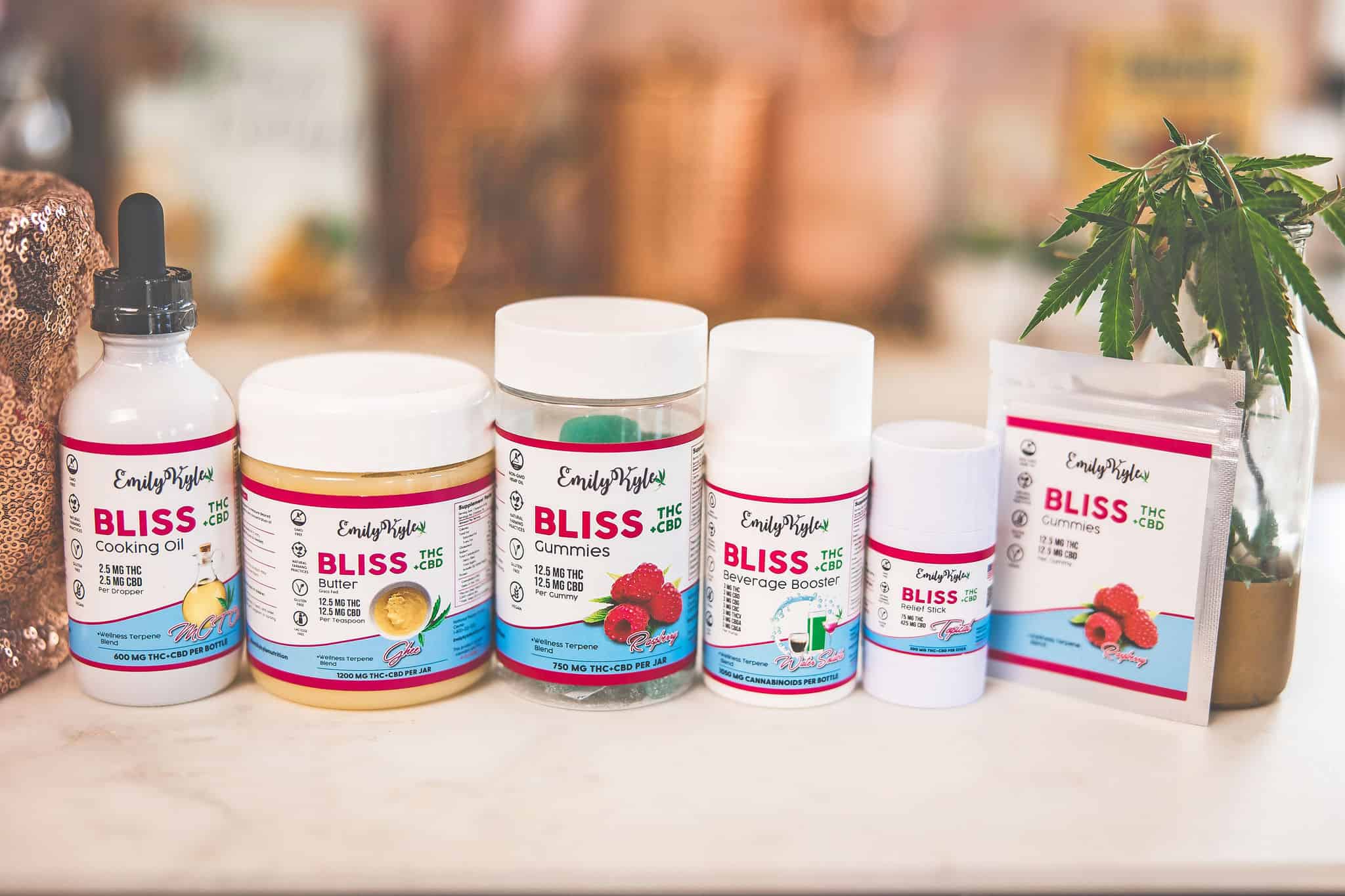
Why You Will Love This Guide
While many people like to make their own oil infusions at home to make edibles, one of the easiest ways to make infused foods is with cannabis concentrates.
Many members of my Well With Cannabis Community agree that they can be the most convenient, easy-to-use, pre-prepared products for cannabis infusions.
Because they are so concentrated, you only need to add a tiny bit to each recipe to get the experience you are looking for.
And because you only need to add a tiny bit, cannabis concentrates will not disrupt your food’s volume, texture, or flavor.
For this reason, cannabis concentrates are very popular among cannabis home cooks.
However, there are a few important things to know before diving into the world of cooking with cannabis concentrates.
With so many different products on the market today, ranging from shatter, wax, crumble, distillate, FECO, and more, it is important to know what product you’re working with and how to use it.
This guide will cover all of these extracts, explore whether they need to be decarbed before infusing them into foods and touch on the easiest ways to incorporate them into your favorite cannabis recipes.
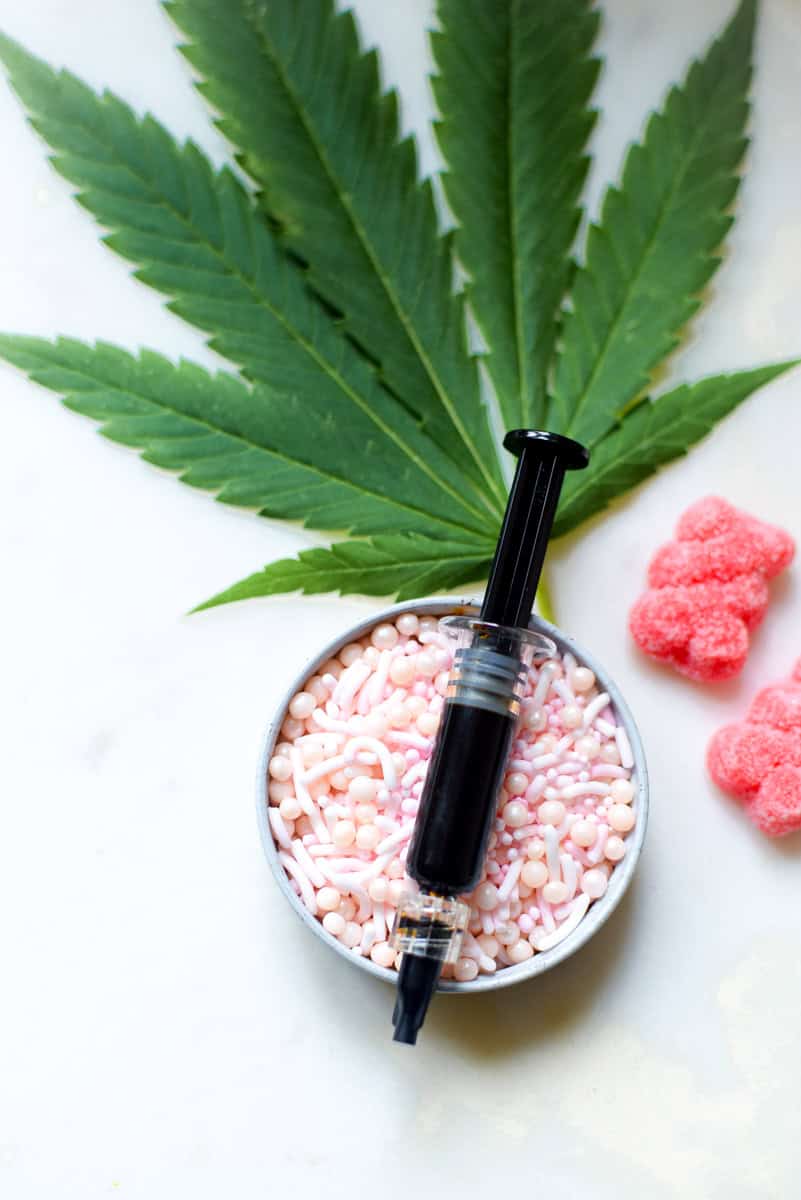
What are Concentrates and Extracts?
In today’s growing cannabis market, you can find many products labeled as cannabis concentrates and extracts.
Concentrates and extracts aim to deliver a potent product by isolating the best parts of the cannabis plant, the cannabinoids.
Some of these concentrates and extracts may even be made safely at home.
The range of cannabis products available today is nothing short of astounding, but for a new user, I understand it can definitely be a bit overwhelming, too.
Below, I’ll break down a little more about cannabis concentrates and extracts, what they are, what forms they come in, and if they may be the right cannabis product for you.
Before we dive in to find out more, it’s important to know that there is a difference between concentrates and extracts.
What Are Concentrates?
Concentrates are a general group of products that contain a concentrated amount of cannabinoids, while extracts are a specific type of concentrate.
Concentrates are just that, a concentration of cannabinoids in a small volume or amount. One example is kief.
Kief comprises the cannabis plant’s resin glands and trichomes, containing much of the plant’s terpenes and cannabinoids.
This means that kief is essentially concentrated cannabis – it’s the most potent part of the plant in terms of cannabinoid concentration.
If you’ve never worked with kief before, you can get my full guide to decarbing and making edibles with kief here.
What Are Extracts
Extracts use solvents to bring out the most desired substances of the cannabis plant.
Many different solvents can be used to make extracts, but some are safer than others.
I recommend avoiding all extracts made with unsafe solvents such as isopropyl alcohol, naphtha, butane, or other toxic ingredients for health purposes.
The safest and most preferred solvent for making cannabis extracts is high-proof food-grade grain alcohol or ethanol.
In the same way that vanilla extract is made using alcohol as a solvent to bring out a strong vanilla flavor, cannabis extracts use alcohol to isolate the powerful compounds in the cannabis plant.
Pros and Cons
Before you start using cannabis concentrates, it’s important to understand the pros and cons that you may encounter while using them.
Higher Potency
The first point can be both a positive and a drawback – concentrates are fast-acting and powerful.
This means you only need to use a little to get the desired effect, but it also means it’s easy to go overboard.
These powerful cannabis concentrates are a great option if you’re using the concentrates for certain medical conditions.
Less Cannabis Taste
While some people love the taste of cannabis in their food, others hate it.
For those who are turned off by the taste of the cannabis plant, extracts can be a great alternative.
Most of the plant matter was removed, resulting in a clean, almost negligible taste.
And if your concentrate does have a slight flavor, because you only need to use a little bit, it’s unlikely you will taste it in your final recipe.
Versatility
But one of the best things about cannabis concentrates is the wide variety of ways they can be used.
You can dab them, vape them, make sublingual supplements, or add them to foods or beverages.
It all depends on your personal preference and preferred consumption method.
Drawbacks
The biggest drawback is that sometimes, judging the quality of the product you purchase is difficult.
Because the cannabis industry is relatively new, there are no regulations about concentrate products, so you’ll definitely find that some are of lower quality than others.
This is why it’s so important to always purchase from a reputable vendor that provides third-party testing for their products.
It is also important to ask the budtender or whoever works at the dispensary which solvents were used to extract the cannabinoids.
Many of these concerns can be alleviated by making your own cannabis concentrates at home.
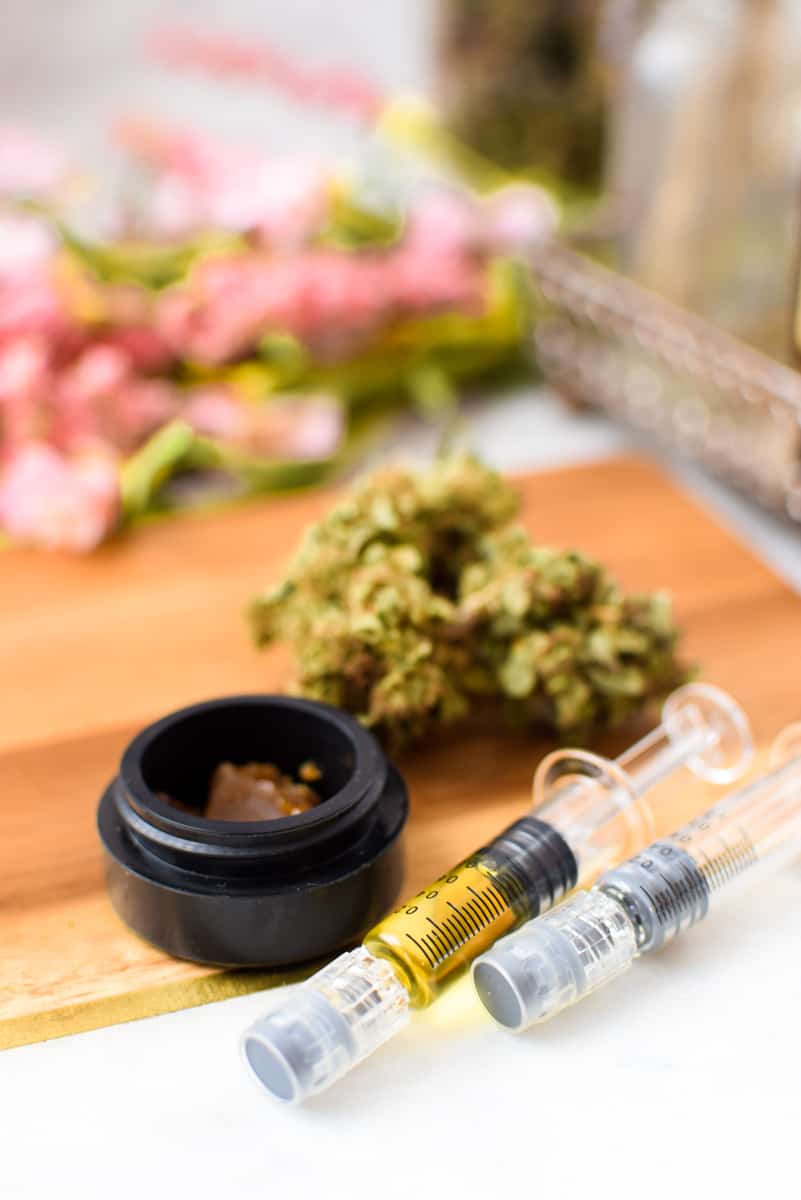
Types of Cannabis Concentrates
Concentrates and extracts come in a wide variety of forms.
They are usually classified by the product they were made from, how they were made, and the texture of the resulting product.
You’ll likely encounter a few different terms, so it’s important to know what they mean before you make a purchase.
These products can be used in a dab rig, which is usually the most popular form of consumption.
However, they can be used when making edibles also. It might take a bit of experimentation to find which is right for you.
Each of the terms below refers to the texture and appearance of the concentrates, but each can be made from various strains.
The effects that each produces will often depend on the strain of cannabis used.
Here are a few terms you should know.
FECO
FECO, also known as full-extract cannabis oil, is the one concentrate in this list that can be made at home with a few relatively simple processes.
It starts by making an alcohol extract known as a cannabis tincture.
Many people choose either a QWET tincture method or a longer-soak Green Dragon tincture method to start.
The cannabinoids are extracted from the plant and suspended in the alcohol.
The alcohol is then safely evaporated off, leaving behind a concentrated black, sticky oil-like substance known as FECO.
You may also see FECO available at your local dispensary.
FECO is often used as a sublingual product or in edibles, but it is not recommended to smoke or vape FECO.
SAVE THIS GUIDE 💌
RSO
One important thing to note is that many people confuse FECO with RSO – also known as Rick Simpson Oil, or use the terms interchangeably.
Even more frustrating, many dispensaries falsely label their FECO products as RSO.
Both FECO and RSO have the same final characteristics and appear very dark, thick, and sticky consistency upon successful completion, and both utilize alcohol as the solvent for extraction.
The main difference between FECO and RSO is the type of alcohol used for the extraction.
FECO utilizes high-proof food-grade grain alcohol, or ethanol, a much safer solvent than the isopropyl alcohol used in the RSO method.
The final outcomes are similar, but isopropyl alcohol (rubbing alcohol, like the kind you would find in your medicine cabinet) is not safe to ingest.
I do not recommend the RSO extraction method and urge you to talk to your budtender or dispensary manager to clarify which solvent was used to produce the final product.
Distillate
Cannabis distillate is a potent oil extract that contains none of the undesired compounds in the cannabis plant.
It can be up to 99% pure, which means it’s one of the most powerful extracts available.
It appears a golden liquid with very little taste or smell.
Distillates are made through a process called molecular distillation, however, there are many different methods used to get to the final product.
Distillates also go through many refinement processes to help remove all of the unwanted plant matter, leaving behind a highly refined cannabis oil.
During the refinement process, the distillate is usually decarbed, meaning that it is ready to use in cannabis edible as-is, and does not need to undergo a further decarboxylation process.
This is just one reason it is one of the most preferred concentrates on the market today.
Shatter
Shatter is an extract that’s usually brittle and glass-like, varying from translucent golden to amber-colored.
While it is most often used as a dab, or to inhale or vaporize, shatter can be decarbed and used in edibles.
Wax
Wax is an extract that’s softer and more pliable than shatter but has a similar appearance.
While it is most often used as a dab, or to inhale or vaporize, wax can be decarbed and used in edibles.
Badder/Budder
Badder and budder are extracts that are softer in texture than shatter and wax, roughly the texture of a stick of butter or cake batter, and comes in shades of bright yellow and orange.
While it is most often used as a dab, or to inhale or vaporize, it can be decarbed and used in edibles.
Crumble
Crumble is an extract that looks similar to badder/butter, but is drier and more crumbly, as the name suggests.
While it is most often used as a dab, or to inhale or vaporize, it can be decarbed and used in edibles.
Hash (Bubble Hash)
Unlike most of the items on this list, bubble hash isn’t an extract.
It’s made by heating up and pressing the resin glands of the cannabis plant.
This crystalline substance melts easily under heat and pressure and forms into a solid that can be used in a dab rig or in cannabis edibles.
Rosin
The difference between these two concentrates is that resin is an extract, while rosin is a concentrate.
Rosin is the oil expelled from freshly squeezed cannabis plants.
It does not utilize any solvents, rather it relys on heat and pressure to extract the cannabinoids from the plant.
Live rosin is often made as a result of making bubble hash.
Live Resin
Live resin is a cannabis concentrate that is made similarly to rosin, but involves the use of solvents.
Like rosin, resin extraction is usually done with fresh, frozen plant matter.
A frozen solvent is then used to extract the cannabis compounds and create the concentrate.
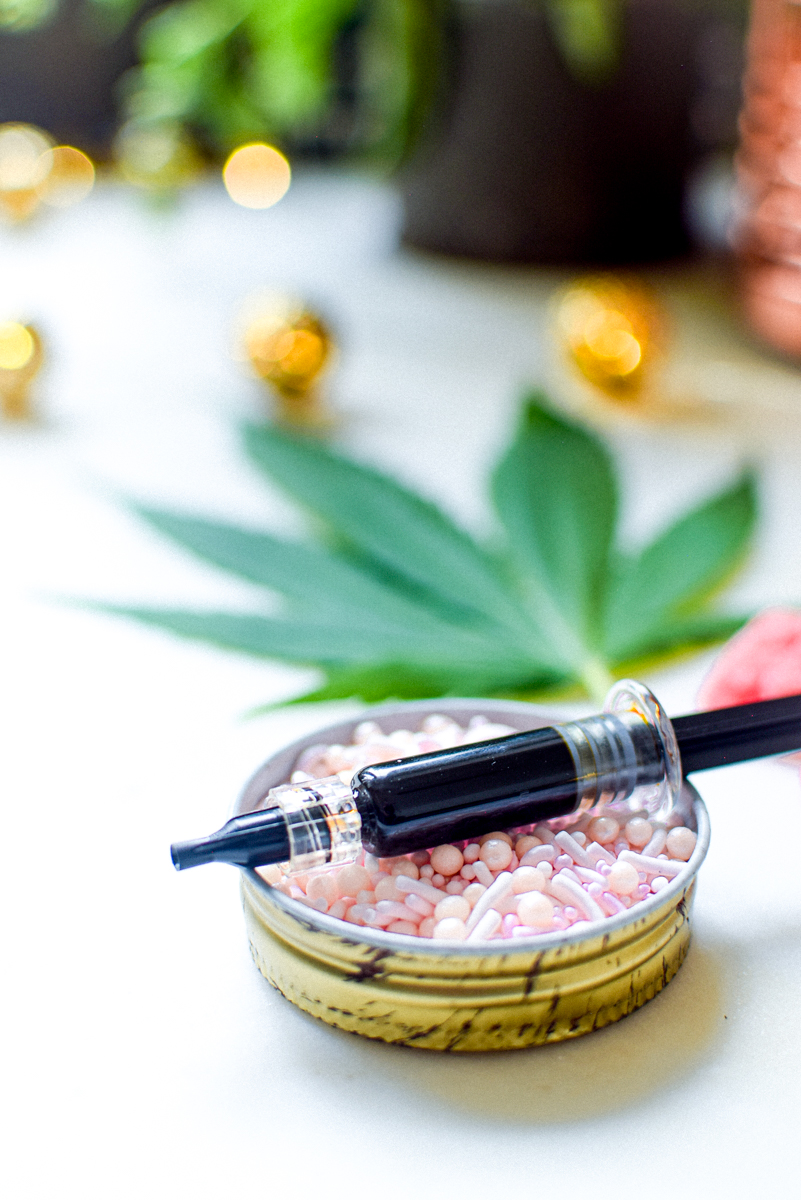
What Concentrates Need to Be Decarbed for Edibles
If you’re a new cannabis edible consumer, you may not know that eating certain cannabis concentrates without decarbing them first will provide little to no intoxicating effect at all.
This is because raw cannabis flower contains cannabinoid acids, non-intoxicating substances that can convert into the psychoactive substances tetrahydrocannabinol (Δ9-THC) or cannabinol (CBD) through the process of decarboxylation 1.
For making cannabis edibles, most people prefer their concentrates to be decarboxylated into the active forms of THC and CBD.
Ultimately, not all concentrates need to be decarbed before use, some have already been decarbed during the production process.
Use this chart below to determine whether your cannabis concentrate needs to be decarbed prior to using it to make edibles.
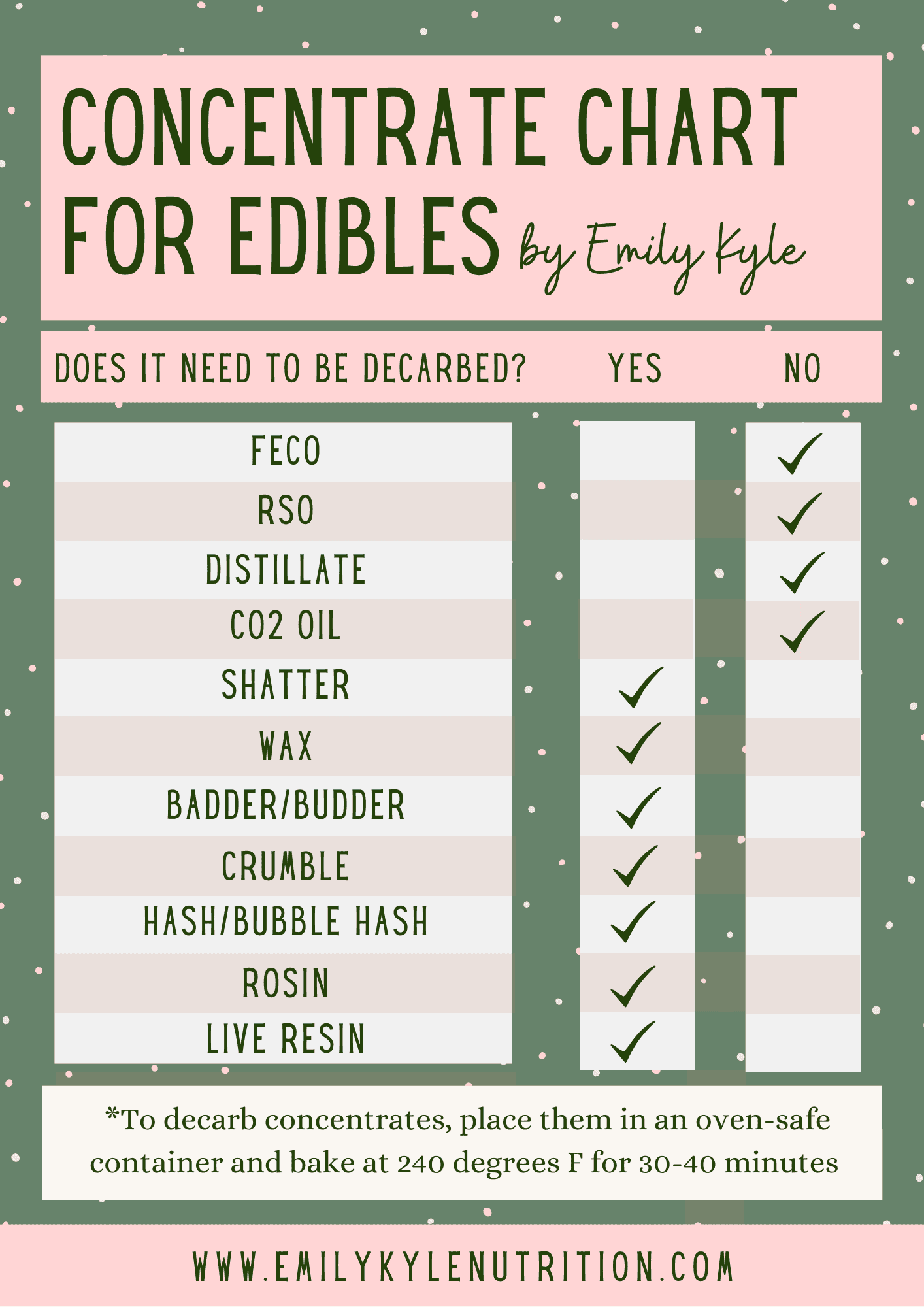
How to Incorporate Concentrates into Recipes
By now, I hope you have a good understanding of the different types of cannabis concentrates on the market today.
I want you to feel confident knowing that concentrates need to be decarbed, and how to decarb them at home.
From here, adding your concentrate to just about any recipe you want is really easy.
First, you need to decide how much you want to add based on your personal tolerance and preferences.
Then, incorporate the concentrate into a liquid portion of the recipe, a fat, if possible.
This will help more evenly distribute the concentrate through the whole recipe, ensuring there are no clumps that could cause higher dosages in certain spots.
For example, if you want to use your cannabis concentrates to bake, gently warm the concentrate and mix it into a little butter or oil.
This will keep the concentrate dispersed throughout the whole recipe.
If your concentrate is hard to work with, gently warm it over the stove or oven until it is liquid enough to mix in.
Never use a microwave to heat a concentrate, as you run the risk of potentially destroying your cannabinoids.
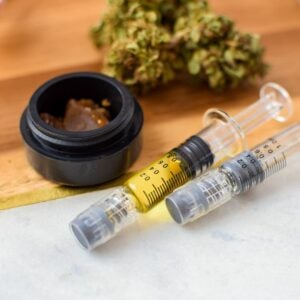
How to Decarb Cannabis Concentrates
Equipment
What You Need
- 1 mL cannabis concentrates
Instructions
- Preheat the oven to 240°F.
- Put the concentrate that needs to be decarbed put into an oven-safe container. A small silicone container like this works great. Do not cover.
- Place the oven-safe container on a baking sheet and place in the oven. Bake at 240°F for 25-30 minutes (for THC) or until it stops bubbling.
- Remove from the oven and allow to cool if desired, or mix directly into butter, oil, or any other fat in a recipe.
Notes

Take your edibles to the next level…
My Edibles Made Easy Online Cooking Course will teach you how to easily make cannabis edibles and topical recipes at home. This step-by-step video course will teach you how to infuse, extract, and create edibles with many different product types – all from the comfort of your own home.
More Guides You Will Love
Articles & How-To Guides
A Beginner’s Guide to Cannabis Edibles
Articles & How-To Guides
How to Decarb Kief & Make Edibles
Cannabis Infusions & Extractions
How to Make AVB Edibles with Already Vaped Bud
Articles & How-To Guides
Lecithin for Edibles: Where, When & Why We Use It


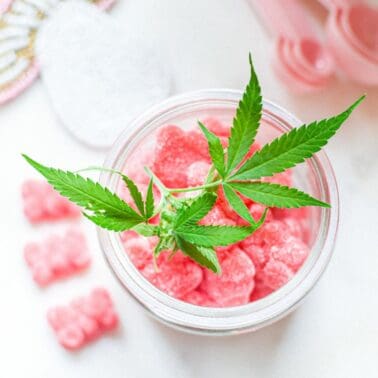
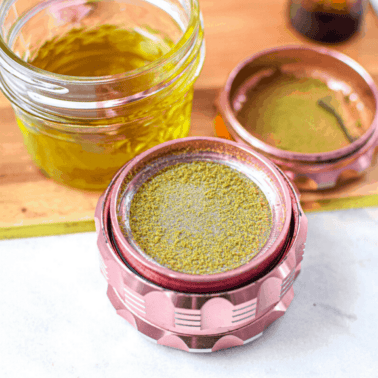
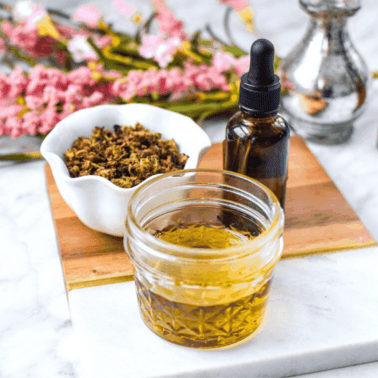
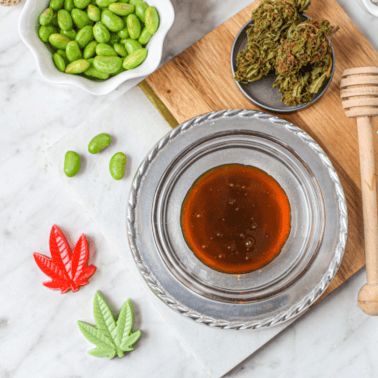








Hi Emily,if I use infused ground flower do I have to decarb it first before infusing?
Hey David. If you’re using infused ground flower, you typically don’t need to decarb it again before infusing. The term “infused” suggests that the decarboxylation process has already occurred during its preparation. Decarboxylation is essential to activate the THC or CBD in cannabis, but if the product is already labeled as infused, it’s ready for use. Always double-check the product details or consult with the supplier to be sure.
I made a tincture today with my Machine and when I poured the tincture through a filter into a measuring cup then into a jar there was a residue of fine particles at the bottom of the measuring cup. It looks just like bubble hash as the alcohol evaporates. Is this stuff usable? Is it Kief or something else?
Hi Bill! The residue you’re seeing is likely plant material or trichomes that settled during the process. It’s not uncommon when making tinctures. While it’s not harmful, some people prefer to filter it out for a smoother result. If it looks like bubble hash, you could experiment with it—it might still have some potency! Just make sure to handle it carefully and test a small amount first. Happy tincture making!
Why is it that Feco does not need to be decarbed?
Hi Duane. Feco doesn’t need to be decarbed because the flower is usually decarbed before the extraction process. Happy infusing!
Hello I was just wondering what the health risks are for using concentrates that have been made with solvents
Hey Gavin, thank you for reaching out! The health risks of using concentrates made with solvents really depend on which solvents were used and how well they were purged during the production process. Properly made products should have minimal residual solvents, but it’s always important to source from a reputable provider or be mindful with home extracts to ensure safety. 😊
If I don’t have a silicone container can I use a mason jar on it’s side to decarb it? Silicone doesn’t melt in the oven?
Thanks so much for your question, Carol! Silicone is actually a safer option and makes it much easier to manage the concentrate. You can find affordable oven-safe [eafl id="48760" name="silicone wax container" text="silicone containers on Amazon"] that work great for this purpose. Mason jars are an alternative, but I’d recommend sticking with silicone if possible. 😊
hey emily do i need to decarb my hash before i put it into the cookies batter then bake would that be double decarbing or can you just but the hash in the batter and then bake would that be decarbing
Hi Jazmne. You should decarb your hash before mixing it into the cookie batter. Baking alone usually isn’t enough to fully activate it. Decarbing first ensures the best results!
Good Morning Emily
I’m new to this world and wow it’s overwhelming, I bought the RSO syringes from my dispensary and I’d love to convert it to a salve but am still confused. I do like the RSO tincture but its price point is horrible so to google I go and wella your site is here. Any advise for the RSO conversion is so appreciated.
Good morning Rain! It can definitely feel overwhelming at first, but we’ve got your back! To convert RSO into a salve, you’ll need a carrier like coconut oil or beeswax to mix with the RSO. Heat gently to combine, and you’re good to go. You can also add the RSO directly into a premade salve of your choice. I hope this helps and wish you all the best on your wellness journey!
On your Concentrate Chart for Edibles it list CO2 Oil as not needing to be decarboxylated. I made the assumption it is a CO2 extraction. My question is why does it not need to be decarboxylated. Once again I’m thinking CO2 extraction which I didn’t think was decarbed before extraction so I must be missing something or misinterpreting what you meant by CO2 Oil. You do a fantastic job providing easy to understand information.
Great question, Virginia! CO2 oil often doesn’t need to be decarboxylated because the extraction process involves heat, which can naturally decarb the oil. However, it’s always a good idea to double-check with the specific product you’re using. Thanks for the kind words — I’m glad you’re finding the info helpful! 😊
Good day Team Emily!
I’ve been scooping up so much info since I found your site! Now I have a small question of definition. I have something called a refill cartridge so if I want to use it in a non-vape way, do I need to decarb it?
Thanks!
Hi there! Thanks for your question and for checking out our site! Yes, if you’re planning to use your refill cartridge in a non-vape way, you’ll likely need to decarb it to activate the cannabinoids as that’s what the vape does when it heats the cartridge. Hope this helps!
You are fantastic, I’m an old og, and your direction is very clear. Thank you, Peace
Thank you for the kind words! Glad the direction was clear. 🙌
Hi Emily! Thanks for always having the best and most accurate info! I find myself on your site on a pretty regular basis, and it’s always been so incredibly helpful! 🙏
I have a question regarding using concentrates in recipes. I know decarbing is necessary (most of the time at least, unless it FECO or distillate) but say I’m not looking to make an entire recipe, but more like a single dose to help me sleep. I usually make myself a cup of chai or cocoa and just dose that one mug for myself. I’m wondering if I absolutely need to have my decarbed material in oil? That’s what I’ve been doing, making a batch of medicated coconut oil, and just take out a teaspoon or so at a time for a single dose. Is that coconut oil necessary or can I just put a little bit of decarbed crumble directly into my warm, night-night drink? Any help would be greatly appreciated!!
Hi Bev! Thanks so much for your kind words. We’re so glad you find the site helpful! 😊 You don’t necessarily need to mix the decarbed concentrate with coconut oil, but it does help with absorption since cannabinoids are fat-soluble. Adding it directly to your chai or cocoa can work, especially if there’s already some fat in your drink (like milk or a creamer). Just make sure the drink is warm enough to help the concentrate fully dissolve. Hope this helps, and sweet dreams! 🌙🍵
Hi! First off I want to tell you how much I enjoy this platform. All of the articles are so informative. Definitely my go to for any edible questions. I am experimenting with using concentrates for edibles. I am using wax. My question is how much concentrate per stick of butter?? Should I just kind of trial and error it to get the right dosage? It just seems like 1g of concentrate per stick may be to strong.
Hi Shabrielle! We’re thrilled to hear you’re enjoying our platform and finding the articles helpful. When it comes to experimenting with concentrates for edibles, getting the dosage right is crucial to achieving the desired effects without overdoing it. Instead of relying on trial and error, we highly recommend using our edibles calculator: https://emilykylenutrition.com/edible-dosage-calculator/. This tool will help you accurately determine the potency of your butter based on the amount of concentrate you’re using. This way, you can adjust the quantity of concentrate per stick of butter to match your preferences safely and effectively. Give it a try, and happy cooking!
If using feco, how much do you add to recip
Hi Debi. It really depends on the potency you’re aiming for with your edibles. If your 1 gram of FECO is approximately 700mg, you should adjust the amount you add based on the desired strength you’re hoping for. For a mild potency, you could add around 1/4 to 1/2 of the gram. For a stronger potency, you may want to add closer to 3/4 or even the full gram.
Hi Emily! I got so excited about making feco I poured the alcohol (everclear) over the flower before decarbing. But it sounds like I might be able to save it. I just bought the silicone baking jar for cooking it. Will this be feco I can use Sublingually?
Thank you!!!!!
Hi Janette! Pouring alcohol over the flower before decarbing is a common mistake, but you’re in luck because it’s possible to salvage the situation. To safely decarb your FECO for the desired activated effects, you’ll need to carefully evaporate the alcohol completely. Once you’re left with just the FECO, you can proceed to decarb using your silicone baking jar at 240ºF for 25-30 minutes or until it stops bubbling. Just ensure you follow safety guidelines closely when evaporating the alcohol, as it can be quite flammable. Good luck, and enjoy your homemade FECO!
Can I use decarbed badder in a sucker recipe ? Gummy recipe? Do I add it straight in like I do my freezer tincture. Thanks for the help ☺️
Your information has helped me so much in this journey of learning and making edibles! Thanks so much
Hello Heather Jean, I’m so happy to hear that my content has been helpful on your edibles journey 🍬🌿 To answer your question, absolutely! 😊 Decarbed badder can be a great addition to sucker or gummy recipes. You can add it just like you would your freezer tincture. Thank you for your kind words and happy cooking!
Can I mix decarboxylated diamond or badder directly to the melting chocolate?
Absolutely, Anthony, you can mix decarboxylated diamond or badder right into your melting chocolate! This is a great way to infuse your chocolate with a little extra magic. Just ensure that your concentrate is fully decarboxylated to activate all those beneficial compounds, and stir well to ensure an even distribution throughout the chocolate. Happy chocolate making! 🍫
I’m interested in your services. Autoimmune disease has me in constant pain and I’m looking for pain relief, energy and focus.
Thx!
Hi Linda. We are so sorry to hear of your struggles, but hopefully cannabis can help you find relief. Here are a couple of guides to help get you started on your journey.
How to Use Cannabis for Autoimmune Disorders
5-Minute Natural Remedies for Stomach Aches & Pains
Well With Cannabis Community
We don’t offer coaching services through Emily Kyle Nutrition, but if you’re interested in personalized cannabis coaching, I may be able to help you. Check out my CannaInsight Consultation package and schedule a discovery call if it feels good to you.
https://reneeleonardcoaching.com/cannainsight-consultation
Sending you love, light and healing vibes Linda.
Thank you, I needed answers and she makes everything easy to understand.
Even the dispensaries are not as easily understood, they don’t have the time or patience to explain in layman terms.
Hi Evelyn. Unfortunately, most dispensaries are glorified retail shops. There isn’t much training or experience required which is unfortunate because so many people use cannabis medicinally and don’t have many options to turn to for help finding products for them. We’re so glad you were able to find the answers you needed with ease! Feel free to reach out anytime with questions or concerns.
Hi Emily, I’m curious if I’m able to decarb the live resin in the oven as you indicated and then add right into the butter I plan to bake with? Or do I need to do a second process to infuse my decarbed live resin into the butter?
Hi Secret baker. You can add your decarbed resin directly into the butter you are planning to bake with, but you’re going to want to warm it and mix thoroughly to ensure even distribution of the resin throughout the butter. Happy infusing!
Hi,
I have a THC oil I use for this recipe.
Each 1ml contains 30mg Tetrahydrocannabinol in MCT oil.
Net volume of bottle is 50ml.
Flower extract 2000mg, Derived.
From Dried flower 9200mg minimum.
Containing THC 1500mg
Do I need to further infuse this with coconut oil to make up the 1 cup?
When I made this recipe. I added 4ml of the above MCT THC oil to lecithin.
I tested the batch and didn’t notice any effects.
Am i missing something, Did i not ration enough THC / MCT oil?
Thank you,
Jamie
Hi Jamie,
Thanks for reaching out and sharing your experience with the recipe. I’m here to help you figure this out!
Based on the information you’ve shared, it sounds like your THC oil is fairly potent with 30mg of THC per ml. If you added 4ml of this oil to the recipe, that would mean you had a total of 120mg of THC in the entire batch.
The effects of THC can vary greatly from person to person based on factors such as individual tolerance, metabolism, and the amount consumed. It’s possible that the quantity you consumed wasn’t enough to produce noticeable effects for you.
If you didn’t feel any effects, you may want to slightly increase the amount of THC oil in your recipe next time. However, do this cautiously and remember that it can take up to 2 hours or more to feel the full effects of edibles.
As for your question about infusing the THC oil with coconut oil, it’s not necessary unless the recipe specifically calls for it. The MCT oil in your THC oil should suffice as a fat for the THC to bind to.
I hope this helps, Jamie! Remember, the key to a great cannabis-infused dish is patience and careful measurement. If you have any other questions or need further clarification, don’t hesitate to ask. I’m here to assist you!
Can I use soure turbo.
Hi William. The Source Turbo can be a great option for creating cannabis oil or alcohol extractions. It offers a safe and efficient way to make concentrates, allowing you to harness the potency and purity of extracted oils.
Hi Emily,
Thanks for all your great articles and sharing your knowledge! Can I decarb bubble hash in a crockpot/pressure cooker/ one pot?
Hi Verena. With bubble hash, we typically recommend using an oven so you can monitor closely and stir, if needed, to avoid burning. You can decarb in an instant pot/pressure cooker but you aren’t able to keep a close eye on it so you run the risk of overdecarbing, but it can still be done. Let us know what you try. Happy decarbing!
Dear Emily,
Everything I know about the process from decarb through consumption I’ve learned from your site so I felt the need to say Thank You for creating such an informative, open, proud cornucopia of valuable information and amazing products (I’m sure.. just purchased revive gummies and roll on). As a forty year veteran I will confidently state that you Emily are the Queen of green. Cannamom… who ever thought??✌️ Be well. Thank you.
Hi David. Your kind words have truly made our day! We’re excited for you to try the Revive Gummies and Roll On. We’ve crafted these products with love and care, so we hope they bring you comfort. Your support means the world to us. We’re always here for any questions or guidance you may need. ☺️
I decarbed live resin & then put it in a recipe. I did mix while warm to some butter to make sure it’s spread evenly throughout the recipe. Turns out the product is no to weak results. Can you suggest how to help raise the potency of my edible?
Hi Becky. The only way to increase the potency of your edibles is by adding more cannabis. Check out Emily’s guide on weak cannabutter that may have some tips and tricks for you: The Ultimate Guide to Fix Weak Cannabutter – Tips & Tricks. I hope this helps!
What is the best way to combine distillate with this mixture? Tried one batch, used powder lecithin, and it didn’t mix so well. Ended up with it Kind of floating on the top.
Hi Jeff. What are you trying to mix the distillate with? Distillate should be added to a liquid or fat. Warming up the distillate and liquid before combining often helps and makes it easier to stir, which can be a lot sometimes to fully and evenly distribute the concentrate.
hi Renee, I have distillate to use. From what I understand, you do not have to decarb it before using, is that correct?
As well I would like to just put it in some MCT oil. Do I follow the above instructions of heating up distillate and MCT and mix it well and that is that and would it be 1ml to 1 cup of MCT oil? I believe thats how much is in a siringe.
Hey Karon! Yes, you are correct that distillate is already decarboxylated, so there’s no need to decarb it before use! Adding it to MCT oil is a great idea. Yes, you can simply warm the distillate slightly to make it easier to mix, combine it with your warmed MCT oil, and stir well. The ratio of 1ml distillate to 1 cup of MCT oil sounds good, but feel free to adjust based on your preferences or needs. 😊
Hello
I,m looking into making small chocolate bears with vanilla wafer chocolate and distillate oil. If I buy a gram of oil with 750 mg thc and make 50 bears would it be safe to say that each bear would be around 15mg?
Thanks Matt
Hi Matt. Yes, that is correct. ?
Hi Emily, thank you for all of the great content you’ve obviously invested a lot of time and thought into compiling. It’s very much appreciated!!
I am looking to infuse MCT with live resin and crumble and have 2 questions…
1. After decarbing can I just mix the resin/crumble into MCT and be done, or does it still need to infuse for a couple of hours?
2. Can I use your same potency calculator for calculating THC content of the tincture, or is that intended for flower based recipes only? I tried it and it shows I would need to add 3 grams of live resin to 8oz of MCT to get to ~10% THC/ml. I just want to be sure I verify that first because this resin is 90% THC per gram, so 3 grams of it in 8oz of MCT seems like it would be pretty strong…but maybe not???
Thanks! -Doug
Hi Doug. 1. You can mix your concentrates directly with the MCT oil without infusing for hours. It is best to combine when the oil and concentrates are warm so they blend together easier. 2. Just as long as you are entering the correct THC percentages in the calculator, everything else will be accurate. To verify your numbers, I entered 1 gram of cannabis at 90% with 1 cup of MCT oil and decarbed loss. I am getting total THC of 710.37mg and 14.80mg per teaspoon. 3 grams of 90% THC is definitely a lot for only 8oz! That would be 44.40mg per teaspoon. Let me know if this makes sense or if you have any other questions. I hope this helps!
Hi Emily, I am looking for sugar free gummies or canna butter due to diabetes. Which products do you recommend? Thanks Kat
Hi Katrina. Emily’s gummies recipe can be made using sugar-free jello. Simply swap a 0.3oz packet of sugar-free gelatin for the traditional 3oz packet of regular flavored gelatin. You can find that recipe here: https://emilykylenutrition.com/cannabis-gummies-with-oil/
Here is Emily’s cannabutter recipe as well. https://emilykylenutrition.com/cannabutter/ I hope this helps!
I was recently gifted a Zenco Duo, which BTW is amazing, especially for concentrates. (It also can use vape carts, which I haven’t used in a minute, but will also do flower, which I haven’t yet tried) My question is after I ‘bake’ & decarb my concentrate, how long can I safely store it? I have a special ‘Sue’s Only’ fridge, where I keep my flower, concentrates, everything. 😎 If I decarb a budder for cookies ( not even sure how much I’d use) and maybe another shatter for something else. Is it feasible? In SoFlo, we turn the oven on as little as possible bc it’s warm down here. (91 today) I saw where the Foodi wasnt recommended bc you can’t open it and see if it’s boiling or needs stirring. So I was hoping to do 2 batches at once, 1 for now, 1 for later but later might be a week or 2 from now so where would I store it?
I absolutely LOVE this forum! I’m 65 now (😩😤😮💨🤭), have my MMJ card just cause, and have a plethora of pain, insomnia, etc. issues for smoking. As a retired nurse, I know a lot of the medical benefits of MJ. I feel so much better smoking. I just have issues finding the right combo to get the most beneficial use from everything it has to offer. That’s why I took the course! 🥰 It was not a mistake!! 😘😘
Thanks for sharing your experience, Sue! You can safely store decarbed concentrate in an airtight container in your fridge for a couple of weeks to months — your “Sue’s Only” fridge sounds perfect! Just make sure it’s sealed to maintain potency and freshness. For edibles, start small with dosing and adjust as needed. Glad you’re enjoying the journey and the course — keep experimenting and finding what works best for you! 😊 We’re so happy to have you with us!